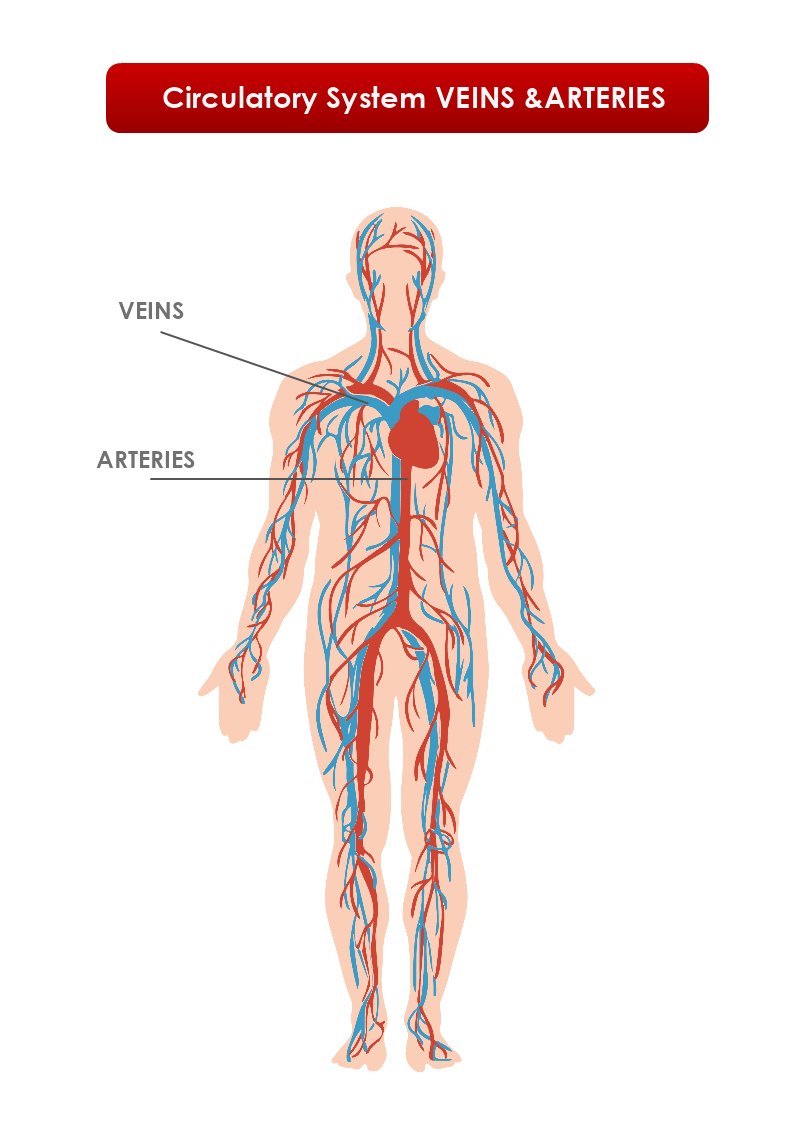
The arteries' function is to carry blood away from the heart. The artery walls have three layers- tunica intima (inner), tunica media (middle), and tunica external (outer).
Elastic arteries- the aorta and pulmonary arteries are elastic ones. They receive blood directly from the heart and need to be elastic to accommodate the surge and contraction.
Pulmonary arteries- they are the only arteries that take deoxygenated blood from the right ventricle to the lungs.
Muscular arteries- their function is to move blood from the elastic arteries through the body. Made of smooth muscle, that can expand and contract the flow of blood.
The veins' function is to move blood back to the heart through them. Blood travels from the smallest veins to the largest. When it is closer to the heart the veins get bigger.
The veins also have walls made up of layers called the tunica intima, tunica media, and tunica externa. Here are the main differences between the arteries and veins:
The walls of the veins have less smooth muscle and connective tissue.
The walls are thinner than the artery walls.
The veins carry less pressure and hold more blood than the arteries.
In the capillaries are exchanged the gases, nutrients, and waste is between blood and tissue.
The constant pumping of the heart maintains the blood pressure.
The veins are responsible for the carrying of blood back to the heart.
The walls of arteries are thicker than the walls of veins, with more smooth muscle and elastic tissue.
Blood vessels have 3 distinct layers- the tunica externa, the tunica media, and the tunica intima.